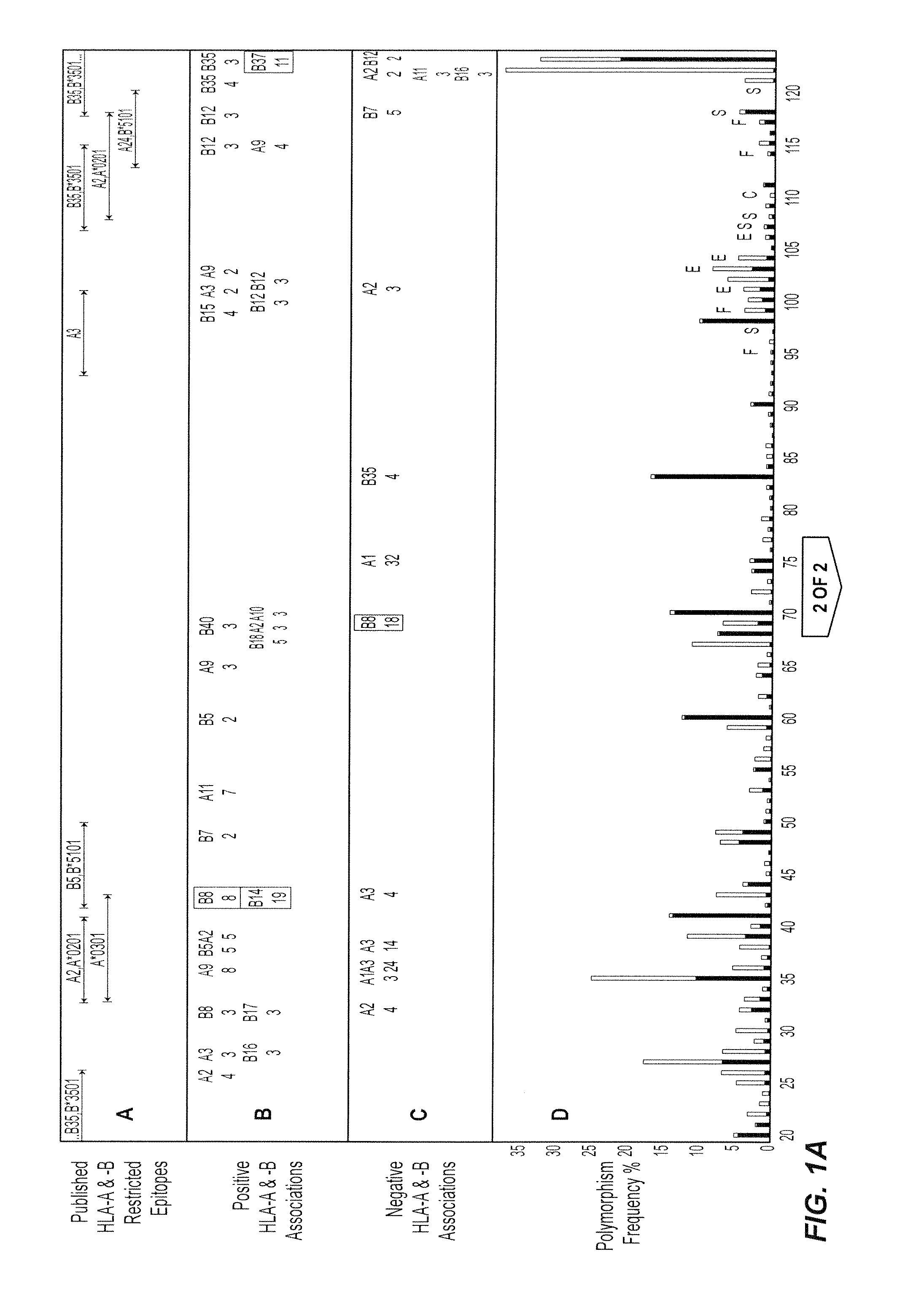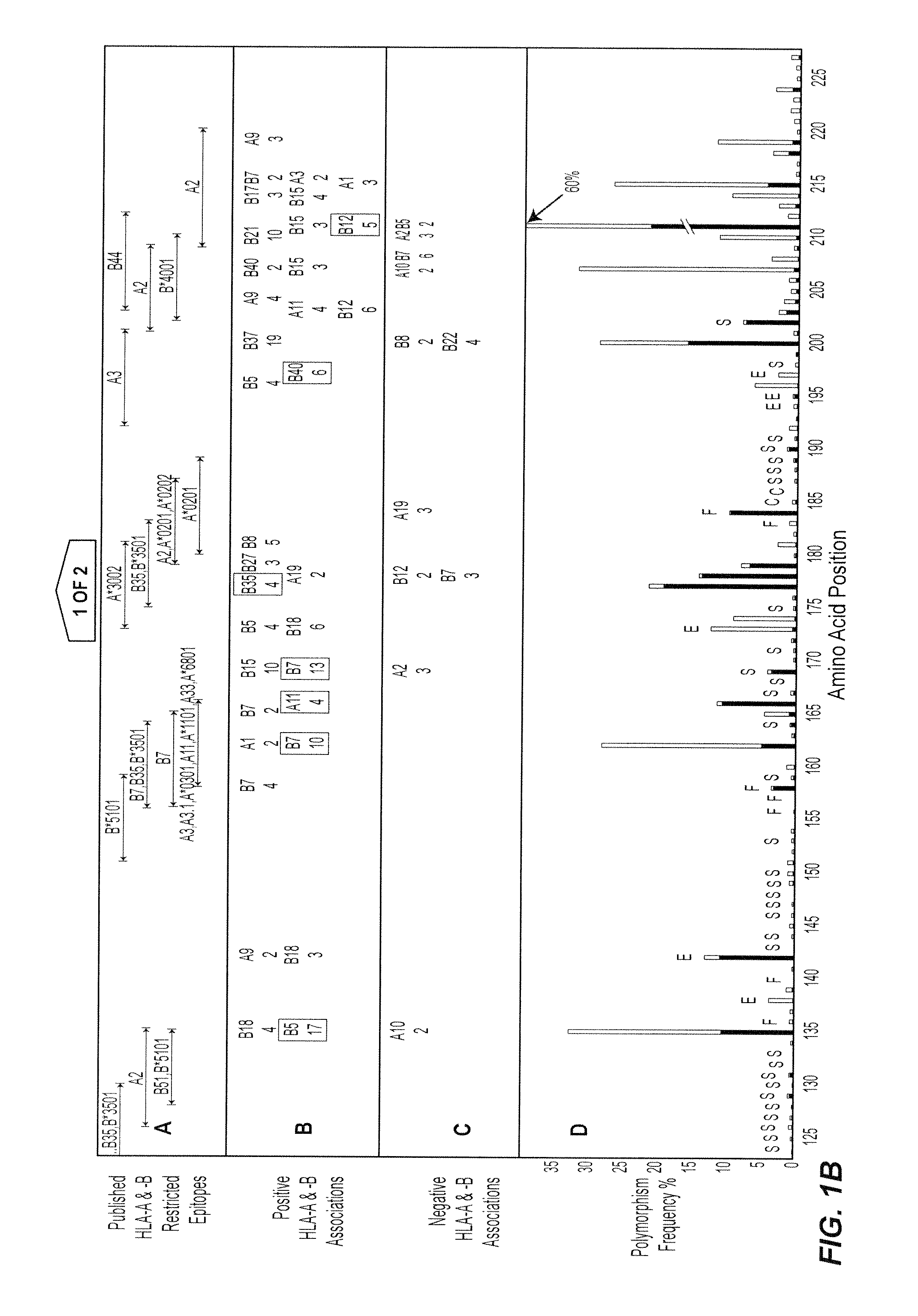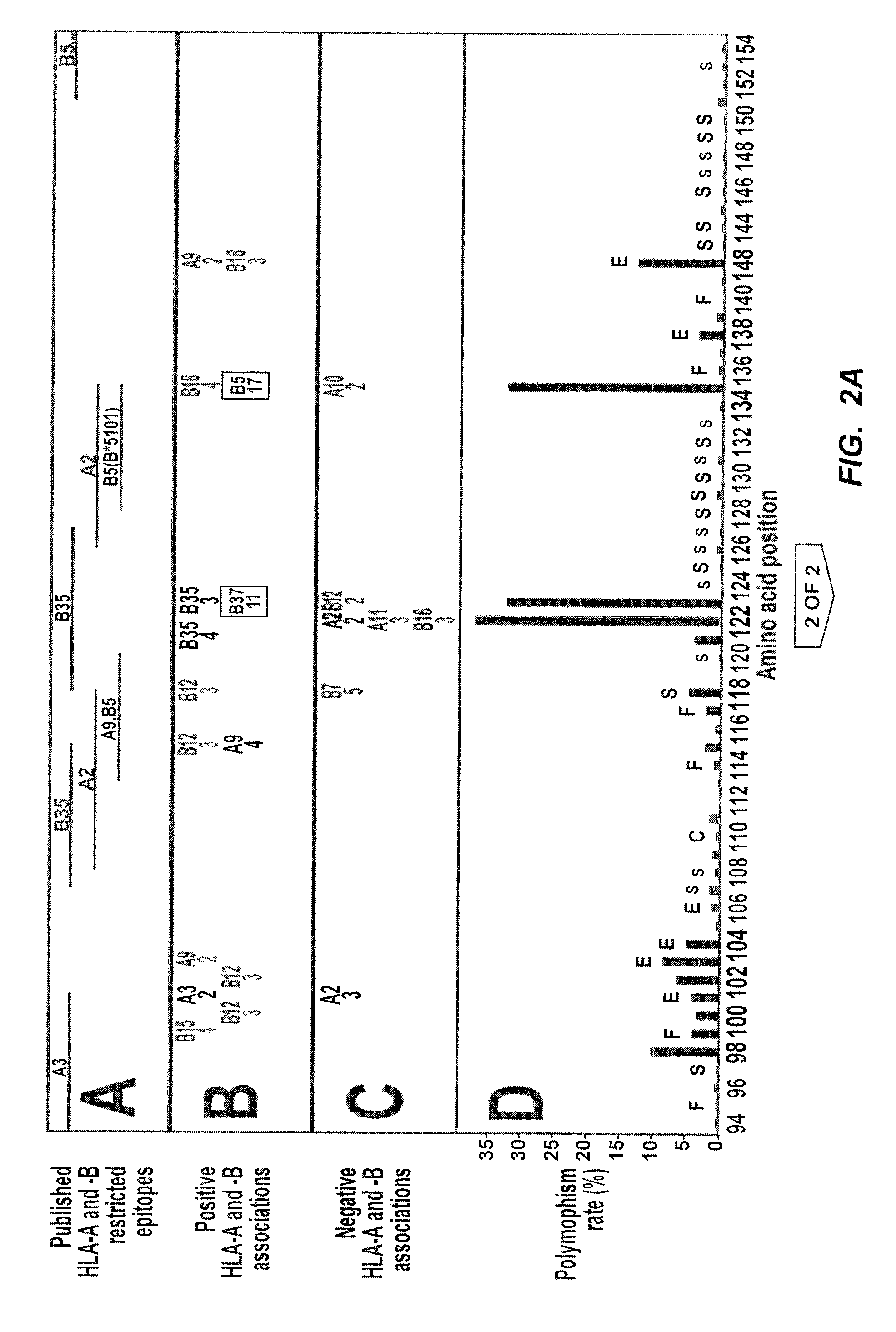Method for Identification and Development of Therapeutic Agents
a technology of bioactive amino acids and therapeutic agents, which is applied in the direction of transferases, climate sustainability, peptide sources, etc., can solve the problems of many immune effects on hiv-1 sequences that are not well characterised, lack of demonstrable viral escape of infected individuals, and current methods of dna or protein analysis fail to account for many of the competing pressures, so as to delay the onset of hiv
- Summary
- Abstract
- Description
- Claims
- Application Information
AI Technical Summary
Benefits of technology
Problems solved by technology
Method used
Image
Examples
example 1
An Examination of HIV-1 Reverse Transcriptase (RT)
[0212]The following Examples illustrate the invention in the context of an examination of HIV-1 Reverse Transcriptase (RT). HIV-1 reverse transcriptase (RT) is highly expressed in virions and immunogenic in the early response to HIV-1. It will be appreciated by those skilled in the field that HIV-1 RT may be substituted for another suitable HIV protein or the sequences selected for examination may be derived from another virus or organism.
[0213]Data collection: Relationships between HIV-1 RT sequences in 473 participants of a Western Australian (WA) HIV Cohort Study and their HLA-A, -B and -DRB1 genotypes were examined. The HLA-A and B alleles present in individuals included A1, A2, A3, A9, A10, A11, A19, A28, A31, A36, B5, B7, B8, B12, B13, B14, B15, B16, B17, B18, B21, B22, B27, B35, B37, B40, B41, B42, B55, B56, B58, B60 and B61.
[0214]The vast majority of patients in the cohort reside in or near the capital of Western Australia, P...
example 2
Polymorphism in Both HIV-1 RT and Protease Amino Acid Sequence
[0259]In this study HIV-1 protease is examined using the methods described above. In particular the method examines whether, in both HIV-1 RT and protease, host CTL pressure and drug pressure may compete or synergise at specific sites, which then influence drug resistance pathways in ways unique to the individual of given HLA type.
[0260]Bulk HIV-1 RT and protease pro-viral DNA sequences obtained from 550 individuals with HIV-1 infection were analysed. Single amino acid positions were examined at a time. The consensus amino acid for each position was determined and compared against the amino acids present in each individual's autologous viral sequence at the corresponding position. A multivariate analysis for a single residue (for example, residue 184 of HIV-1 RT, methionine in consensus) was carried out in which the outcome of interest was the presence or absence of a specified polymorphism (M184V) or alternatively, any v...
example 3
Evidence of HIV-1 Adaptation to HLA-Restricted Immune Responses at a Population Level
Polymorphism Rate and Functional Constraint in HIV-1 RT
[0281]The relationship between polymorphism rate at single residues in HIV-1 RT and the known functional characteristics of the residues was examined (1). The polymorphism rates at the critical catalytic residues in HIV-1 RT (n=3, 0.53%), stability residues (n=37, 1.06%) and functional residues (n=11, 3.05%) were lower than at external residues (n=10, 5.95%) (P=0.0009, Wilcoxon).
[0282]Statistical methods Power calculations, covariate selection procedures and randomisation procedures are described in detail below.
[0283]Steps in the analysis at a single amino acid—an example using position 135 of HIV-1 RT
[0284]Any substitution of population sequence consensus amino acid (isoleucine) at position 135 of HIV-1 RT, ie I135x was set as the outcome / response variable. The starting covariates / explanatory variables were all HLA-A and -B alleles present in ...
PUM
| Property | Measurement | Unit |
|---|---|---|
| time | aaaaa | aaaaa |
| acid | aaaaa | aaaaa |
| polymorphic | aaaaa | aaaaa |
Abstract
Description
Claims
Application Information
 Login to View More
Login to View More - R&D
- Intellectual Property
- Life Sciences
- Materials
- Tech Scout
- Unparalleled Data Quality
- Higher Quality Content
- 60% Fewer Hallucinations
Browse by: Latest US Patents, China's latest patents, Technical Efficacy Thesaurus, Application Domain, Technology Topic, Popular Technical Reports.
© 2025 PatSnap. All rights reserved.Legal|Privacy policy|Modern Slavery Act Transparency Statement|Sitemap|About US| Contact US: help@patsnap.com



